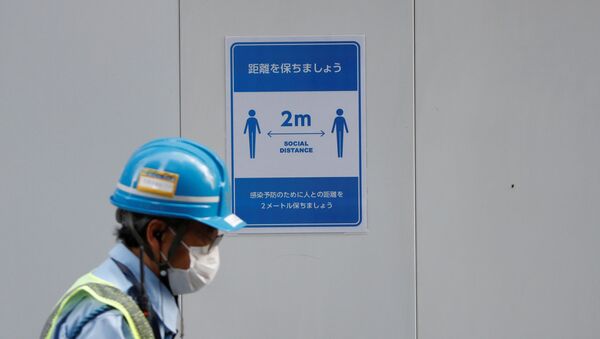A meta study published in The Lancet medical journal, of 172 observational studies that span 16 countries worldwide, concluded that masks and social distancing offer significant benefits in reducing the spread of COVID-19. Rania MacIntyre, Professor of Global Biosecurity at Australia's University of New South Wales, explains the significance of this report which was commissioned by the World Health Organization.
Sputnik: Can you explain for a lay person what the "immediate and important implications" of your study are, in so far as tackling COVID-19 and informing future disease models is concerned?
Professor Raina MacIntyre: Firstly, it was not my study - I only wrote a commentary about the study by Derek Chu and colleagues, which was a WHO commissioned study. The study confirmed that physical distancing, masks and eye protection all prevent infection with the serious coronavirus infections SARS, MERS CoV and COVID-19.
The mask issue has been particularly controversial, but this study has resulted in WHO changing it's guidelines and recommending masks in the community. The implications of the study are both in healthcare and the community. For countries which are opening up and resuming normal activities, it highlights that masks and physical distancing both work and should be used together to reduce the risk of resurgence of COVID-19.
Sputnik: This study was itself a meta study of 172 observational studies across 16 countries. What benefits are there to doing a study of studies and what limitations are there to doing this form of research?
Professor Raina MacIntyre: There is no randomised controlled trial of masks or distancing for COVID-19. In the absence of a this, the best evidence we have is from trials of other respiratory viruses, or from observational studies of beta-coronaviruses. This study synthesises all the available evidence specific to SARS, MERS and COVID-19 using the GRADE criteria, and gives us the best available evidence to date which is specific for coronaviruses.
Sputnik: Isn't it possible that some of the 172 observational studies may not be scientifically rigorous enough to draw conclusions? How does one identify and compensate for such possibilities?
Professor Raina MacIntyre: The way the meta-analysis was done accounts for the strength of the evidence and limitations of individual studies.
Sputnik: According to the study, wearing a mask or respirator reduces the likelihood of spreading the virus from 17.4 per cent to 3.1 per cent and wearing eye protection reduces transmissibility of the virus from 16 per cent to 5.5 per cent. But in both cases the article says that the certainty of the evidence is "low". Why is the certainty of evidence here low and how can policy decisions be made on evidence which isn't at least moderate to high in terms of certainty?

Professor Raina MacIntyre: The assessment of the certainty is made based on the GRADE criteria, which takes into account a number of factors but also has some degree of subjectivity. Importantly, the findings were statistically significant.
Sputnik: Why did they include studies which looked at SARS and MERS, aren't these completely different viruses to COVID-19?
Professor Raina MacIntyre: They are all zoonotic beta-coronaviruses which have common characteristics and modes of transmission. The WHO set the terms of the study, but I would assume they wanted to ensure a larger body of evidence, as there are fewer studies of COVID-19 alone.
Sputnik: What needs to be done in order to obtain scientifically valid results with a high certainty of evidence in terms of transmissibility of COVDI-19?
Professor Raina MacIntyre: We need a combination of clinical, virological and transmission studies that answer the question from different angles.




